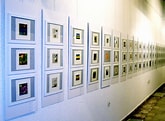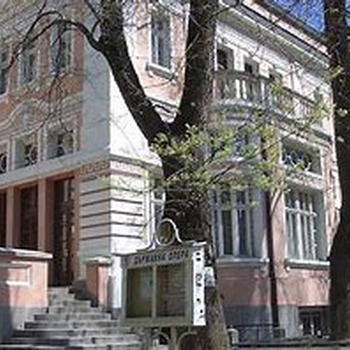City Art Gallery
Overview
The dream of an art gallery in Stara Zagora dates back to the end of the 19th century and is directly related to the future patriarch of Bulgarian art, Prof. Anton Mitov. At the beginning of the next century, together with their young fellow citizen and student Vasil Marinov, they formed the public attitude about the need for this. In 1908 this was already a fact. A year after the founding of the archeological society "Augusta Trayana", its founder and first chairman Atanas Kozhuharov addressed an invitation to the artist Nikola Stoenchev to present to the museum his picturesque portrait of the revolutionary Kolyo Ganchev. This is the first canvas, which marks the beginning of the art collection. After him here comes the portrait of Atanas Kozhuharov painted by Evgenia Ilieva. They are joined by artists Vasil Marinov and Vasil Kostakev. The theatrical troupe of the city provides for the future collection the portrait of the opera singer Hristina Morfova, created by Ivan Markvichka. Based on the original idea, Atanas Kozhuharov asked his son Nikola Kozhuharov to convince his colleagues from Stara Zagora and his friends from the country to donate their works. For a short period of time the art collection is enriched with paintings such as "Landscape from Kazanlak" by Anton Mitov, "Silent Sadness" by Nevena Kozhuharova, "Winter in Stara Zagora" by Dimitar Gudzhenov, "Near the Klisura Monastery" by Boris Mitov, with works of Georgi Evstatiev, Vasil Dimov, Atanas Mihov, Dobri Hristov, Zhelyo Tachev, etc. The collection of works formed in this way is separated as a picture part / department / of the archeological society "Augusta Trayana". By 1921 the art collection numbered 45 works. Over the years, it continues to grow. The organizers attract a number of their friends from other cities in the country. The many artists from this city, as well as the exhibitions they opened in the 1920s and 1930s, contribute to the fame of Stara Zagora as an active cultural center. The next generation, that of Vasil Todorov, Nikola Arashev, Evgenia Ilieva-Lepavtsova, Mario Zhekov, Nikolay Evrov, Olga Bradistilova, Dimitar Kumanov, Dimitar Karadzhov, Petar Slavov, etc., make this collection more and more impressive with their presence. In the second half of the 1950s, preparations began for its separation from a section of the History Museum into a separate cultural institution. In 1958, with a decision of the Municipal Council, this organizational activity was launched and the following year it already performed the functions of an independent city art gallery. Dozens of other works have been transferred to it, scattered in schools, community centers and associations. Rusi Karabiberov, who was appointed its first director, is in charge of this research activity. The first exposition of the Gallery was opened on July 17, 1960, which includes 53 of the most significant works from the collection. This marks the beginning of a new stage in its collecting and popularizing activities. For nearly two decades, her home will be the east wing of the Drama Theater. Since 1977 it has been housed in the building of the former BNB. The artist Ivan Popchev has been appointed its second director. The period of the 70s and 80s is characterized by an active contribution to the enrichment of the Gallery's funds, with the dynamics of the expositions and the expansion of the research work. Increasing the number of solo and group exhibitions organized by the guild, holding dozens of international plein airs on painting and enriching the budget of the Gallery contribute to this.
In 2000, with a decision of the Municipality of Stara Zagora for a new base of the Gallery, the building of the former central halls / built in the early 30s / was provided. After two years of renovation and adaptation of the spaces, it began to function as a gallery with a total exhibition area of 1200 square meters and separate storage for all its funds. This opens up new opportunities for the Gallery for a richer presentation of its most significant works from all periods and types of art, organization of larger exhibitions and art forums, visiting exhibitions from the country and abroad, a variety of promotional events. . As of 2015, the Stara Zagora Art Gallery has over four thousand works. They are divided into six departments: "painting", "graphics", "sculpture", "icon painting", "Renaissance engravings", "applied arts". They feature works by almost all Bulgarian artists from the last two centuries. The main artistic phenomena of our national art are also covered in their diversity. The significant donations from the heirs of Vasil Dimov / 1981 / to Nikola Kozhuharov / 1983 /, to Evgenia Ilieva - Lepavtsova / 1987, 1995 /, to Georgi Evstatiev, to Konstantin occupy a special place in enriching the funds of the Gallery. Tringov / 1999 /, Vasil Marinov / 2004 /, Dona Boyadzhieva / 2011 / and others. Other forms of income include selected works from the city's plein airs on painting, as well as donations from dozens of artists whose work the Gallery has presented.
In its hundred-year history, the Stara Zagora Art Gallery has organized over one thousand two hundred exhibitions and exhibitions, some of which have visited almost all galleries in Bulgaria, as well as art museums in the Czech Republic, Portugal, Great Britain, Russia, India, Germany, Serbia and After the establishment in the new building, every year about 24 exhibitions with works from the funds of the Art Gallery of Stara Zagora, joint exhibitions with other galleries, visiting exhibitions from the country and abroad, etc. are presented here. Since 2004, the Stara Zagora Gallery has been the main organizer of the Balkan Quadrennial of Painting "Myths and Legends of My People", and in 2016 it was its fourth edition. With the wealth of its funds, exhibition and promotion activities, it ranks among the most popular and significant art galleries in the country.
Recommended
- Ancient Forum of Augustus Trajan
- Hall of Laughter
- Zoo
- Bedechka Park
- Neolithic dwellings museum
- Archaeological complex "Museum of Religions"


 Bulgarian
Bulgarian Romanian
Romanian





